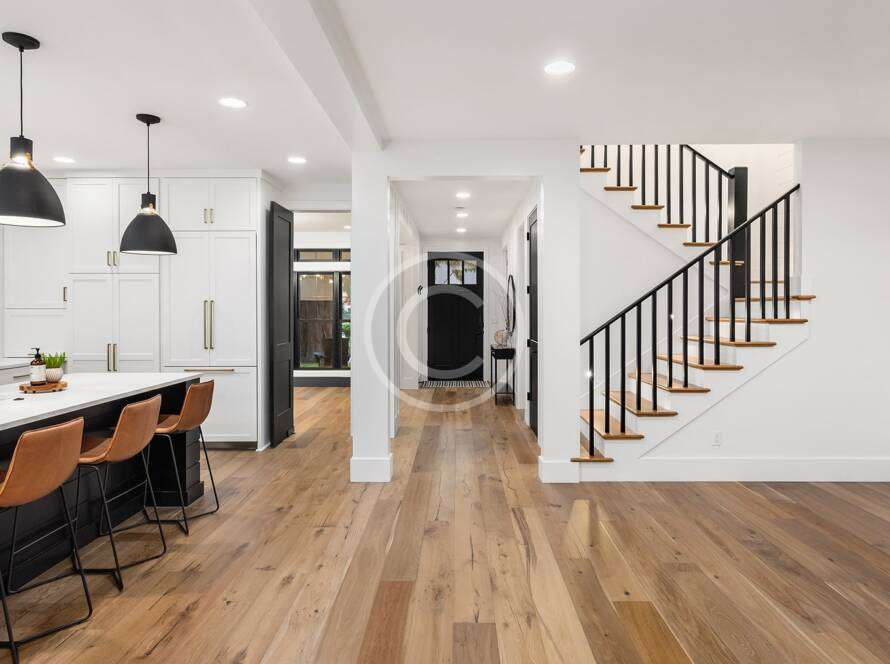Bathroom remodels are one of the most popular home improvement projects in Virginia, but they’re also among the most commonly flagged during Virginia county building inspections. Whether you’re a homeowner upgrading your space in Fairfax, Virginia Beach, Richmond, or anywhere in the Commonwealth—or a contractor managing multiple jobs—understanding what local inspectors look for can save you time, money, and frustration.
Below are some of the top reasons bathrooms fail inspection in Virginia—and exactly how to avoid them.
1. ❌ Improper Ventilation
The Problem:
Many bathrooms in Virginia fail inspection because they don’t meet local ventilation requirements. Poor ventilation traps moisture, leading to mold, mildew, and long-term damage—issues that can be expensive to fix and harmful to health.
What Virginia Inspectors Look For:
- Exhaust fans correctly sized for the bathroom’s square footage.
- Ductwork vented outside the home, never into an attic or crawl space.
- Operable windows in bathrooms without fans (varies by county code).
How to Avoid It:
- Install an exhaust fan rated for your bathroom’s size.
- Ensure ducts vent directly to the exterior.
- Use timers or humidity sensors to automatically reduce moisture.
2. ⚠️ Faulty Electrical Work
The Problem:
Bathrooms mix water and electricity, so Virginia electrical codes prioritize safety. Incorrect wiring, missing GFCI outlets, or improper grounding can trigger an instant inspection failure.
What Virginia Inspectors Look For:
- GFCI-protected outlets within 3–6 feet of any water source.
- Proper grounding and bonding for all metal fixtures.
- Secure, code-compliant wiring behind walls and ceilings.
How to Avoid It:
- Hire a licensed Virginia electrician.
- Install GFCI outlets in all wet areas.
- Separate lighting and ventilation circuits where required.
3. 🚿 Plumbing Violations
The Problem:
Improper slope, incorrect pipe sizing, or venting mistakes can lead to drainage issues, sewer gas smells, or hidden leaks.
What Virginia Inspectors Look For:
- Correct slope for drain lines (¼” per foot).
- Adequate venting for every fixture.
- Water pressure and leak tests on supply lines.
- Backflow prevention devices when required.
How to Avoid It:
- Follow the Virginia Uniform Statewide Building Code (VUSBC) and the IPC.
- Pressure-test plumbing before closing walls.
- Work only with licensed plumbers who pull permits.
4. 🚽 Inadequate Fixture Clearances
The Problem:
Virginia building codes specify minimum distances for toilets, sinks, tubs, and showers. If your remodel doesn’t meet these clearances, your inspection will fail.
What Virginia Inspectors Look For:
- At least 15″ from toilet centerline to any side wall or obstruction.
- 21″ of open space in front of toilets and sinks.
- Proper head clearance for showers.
How to Avoid It:
- Plan fixture layout early in the design phase.
- Use manufacturer rough-in guides.
- Verify framing won’t interfere with installation.
5. 🛠️ Missing or Incomplete Permits
The Problem:
Even perfect work will fail if it’s done without the required permits. In Virginia, permits are mandatory for most bathroom remodels involving plumbing, electrical, or structural changes.
What Virginia Inspectors Look For:
- Permit numbers posted on-site.
- Work matching the approved plans.
How to Avoid It:
- Check with your county’s building department before starting.
- Schedule both rough and final inspections.
- Keep permit paperwork on hand.
6. 🧱 Waterproofing Failures
The Problem:
Improper waterproofing is one of the top causes of failed bathroom inspections in Virginia—and costly water damage later.
What Virginia Inspectors Look For:
- Waterproof membranes or cement backer board behind tiled areas.
- Properly sealed shower pans (flood test may be required).
- Correct vapor barrier installation.
How to Avoid It:
- Use cement backer board in wet areas, not green board.
- Apply liquid or sheet membranes per manufacturer specs.
- Perform a flood test before installing tile.
✅ Final Thoughts
Passing a Virginia county bathroom inspection isn’t just about meeting code—it’s about protecting your home’s value and safety. By addressing these common issues before the inspector arrives, you’ll reduce delays, avoid costly rework, and ensure your remodel lasts for years.
Whether you’re renovating in Loudoun County, Norfolk, Arlington, or rural Virginia, always follow the Virginia Uniform Statewide Building Code, pull the right permits, and communicate with your local building department. When in doubt—ask your inspector before you build.




